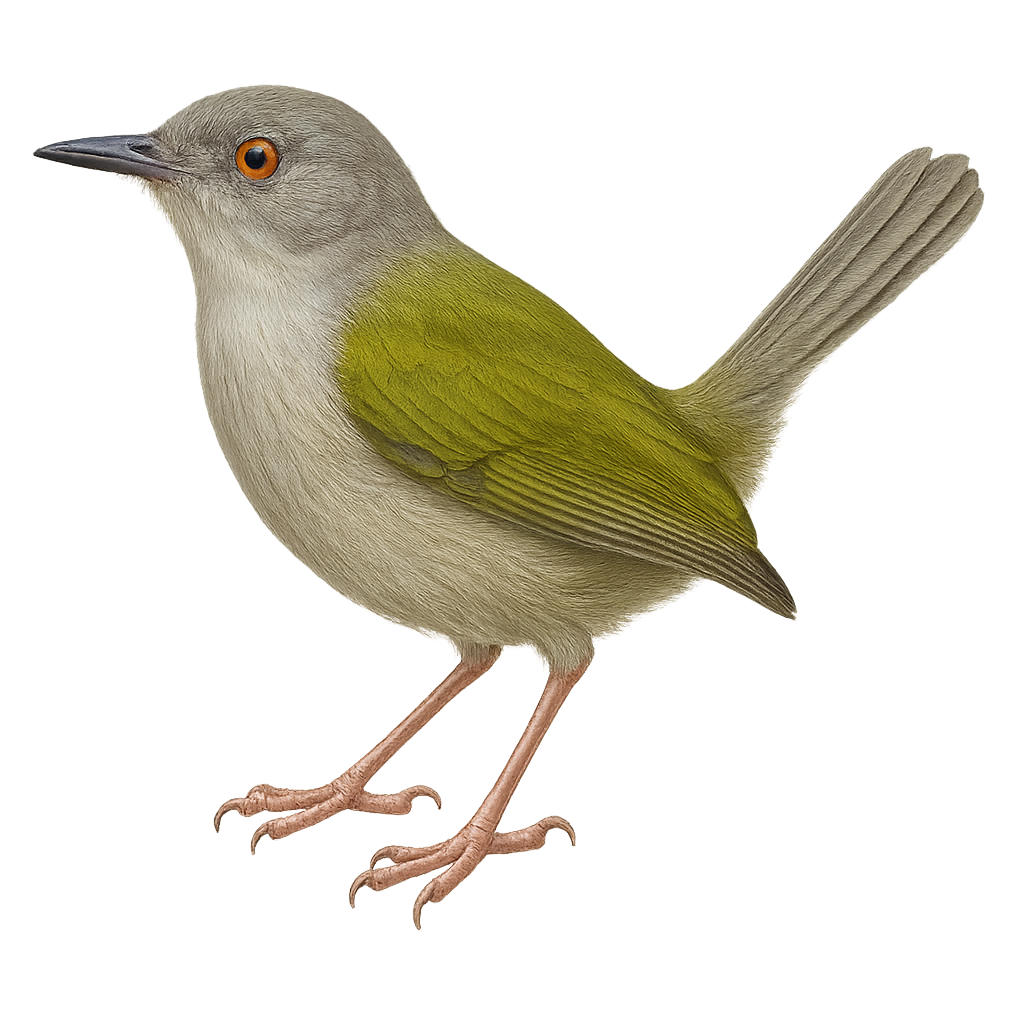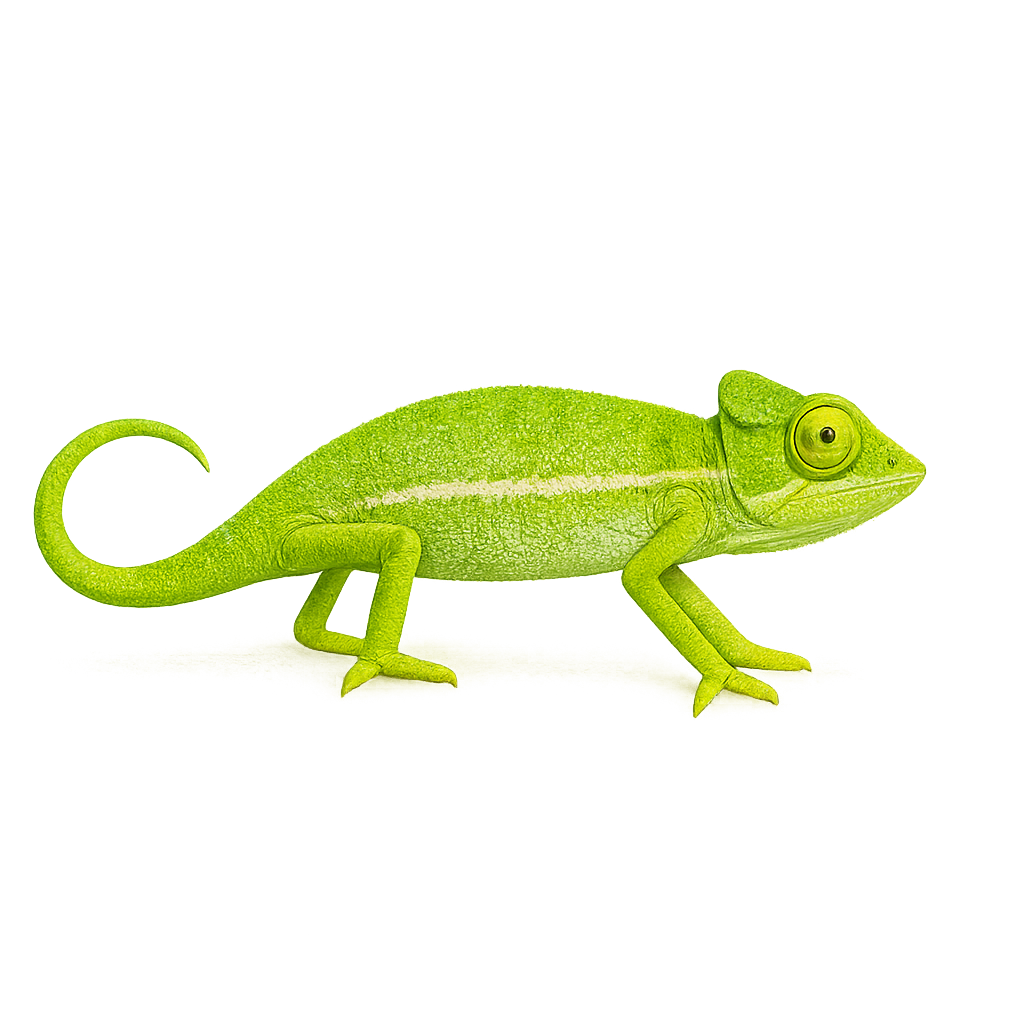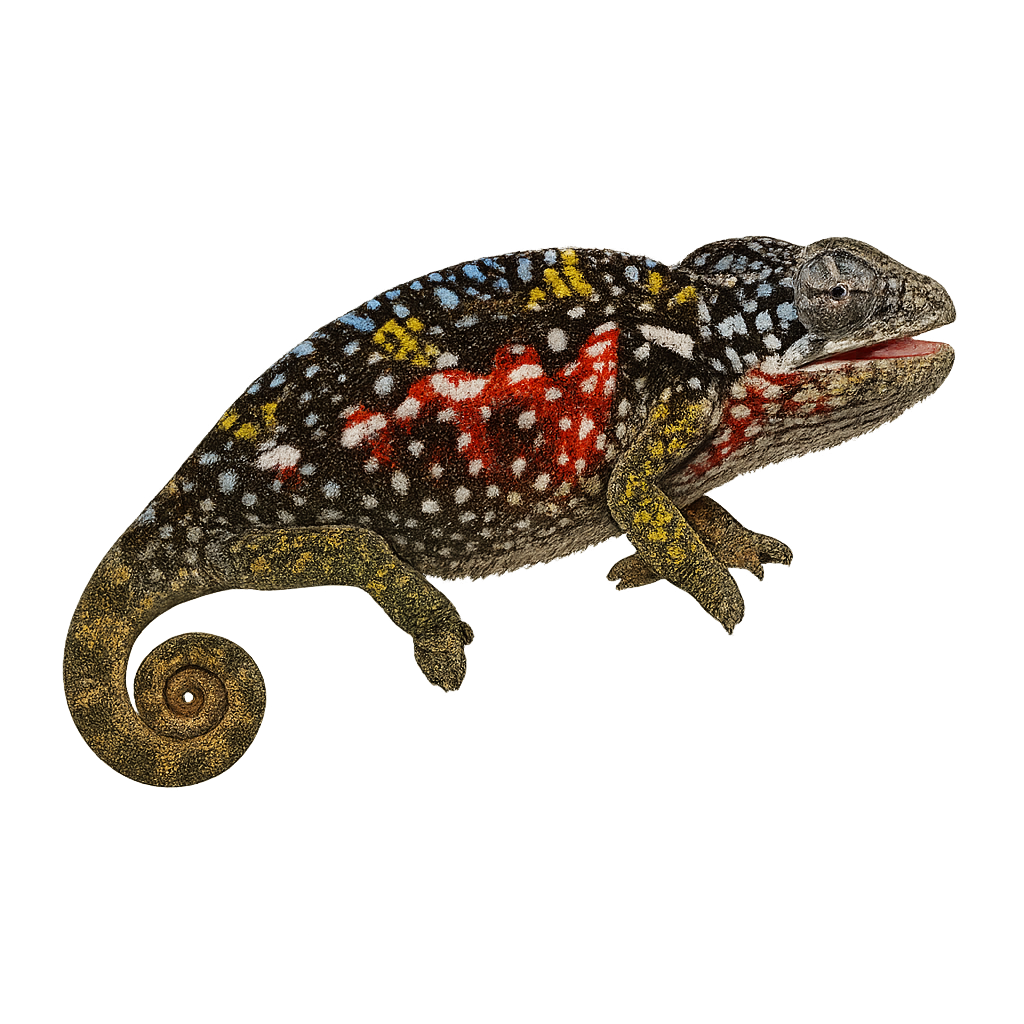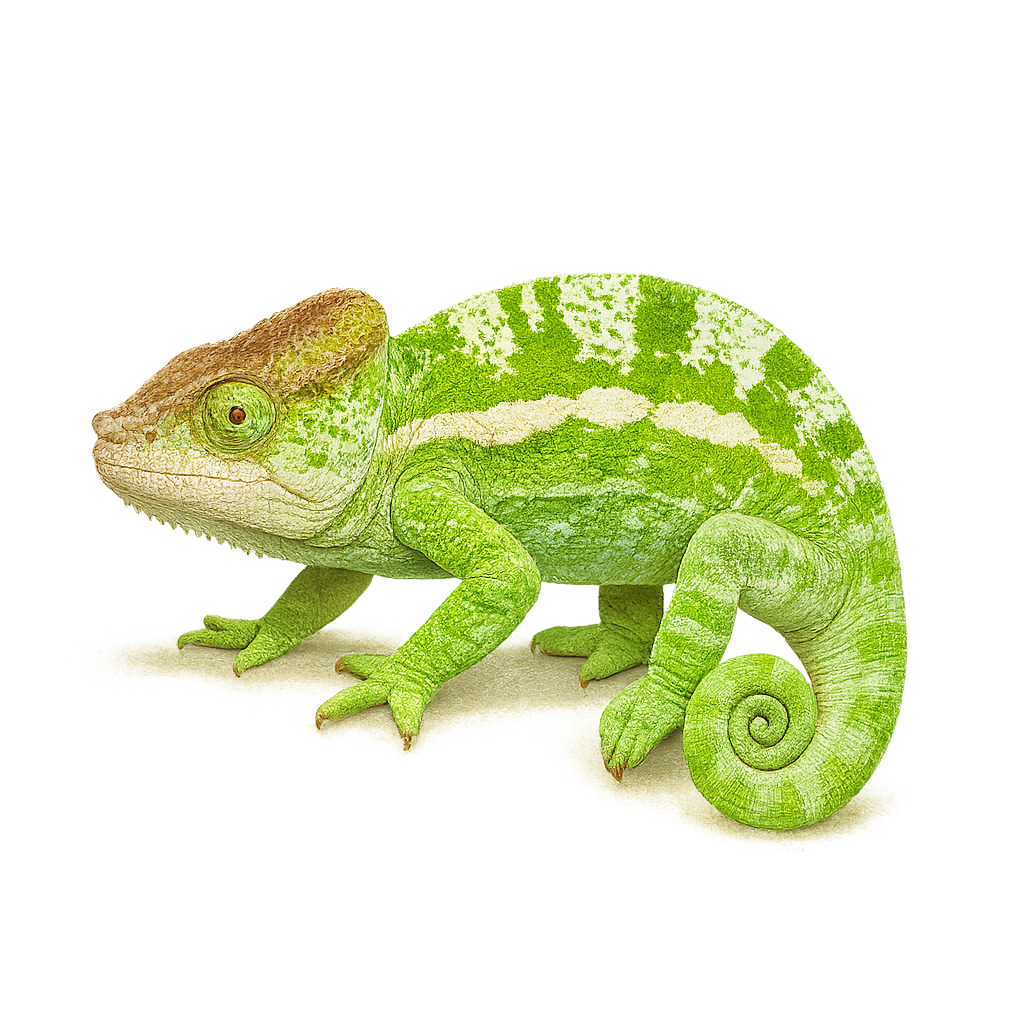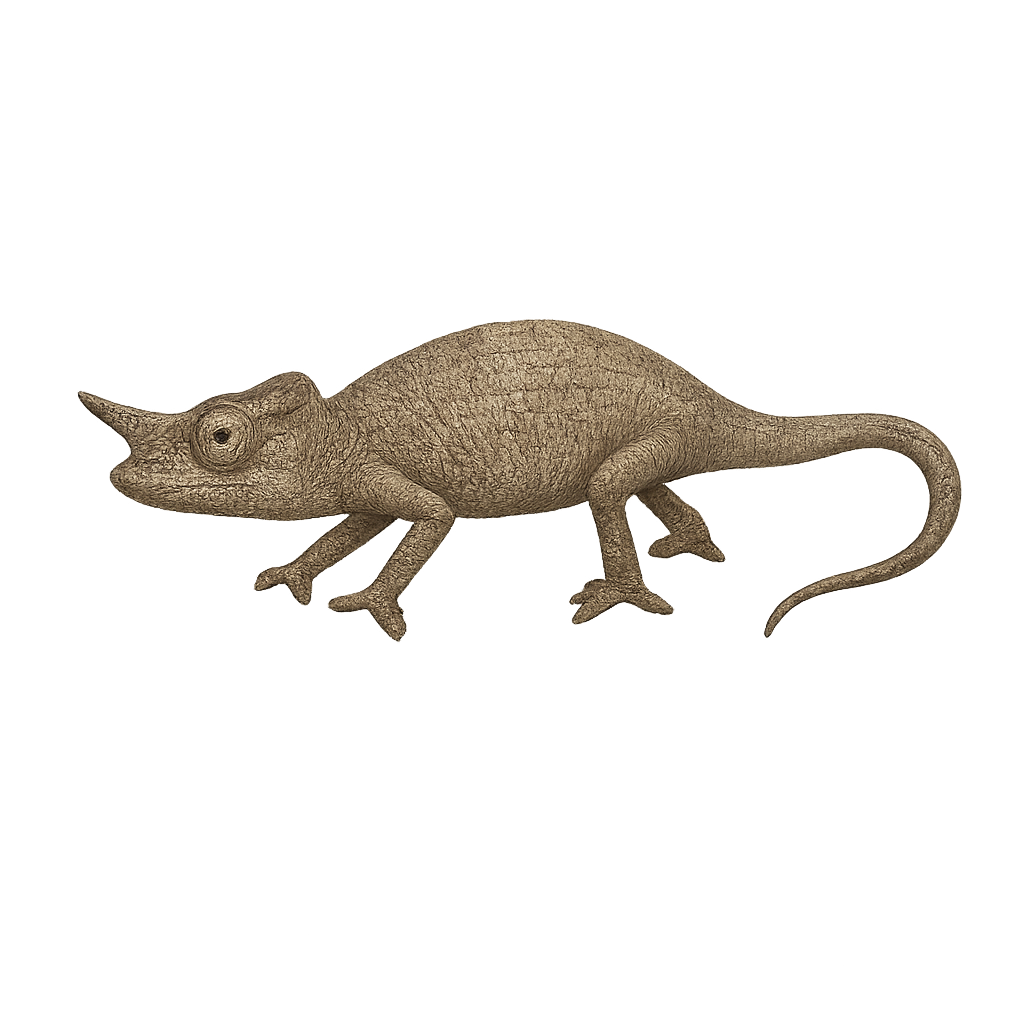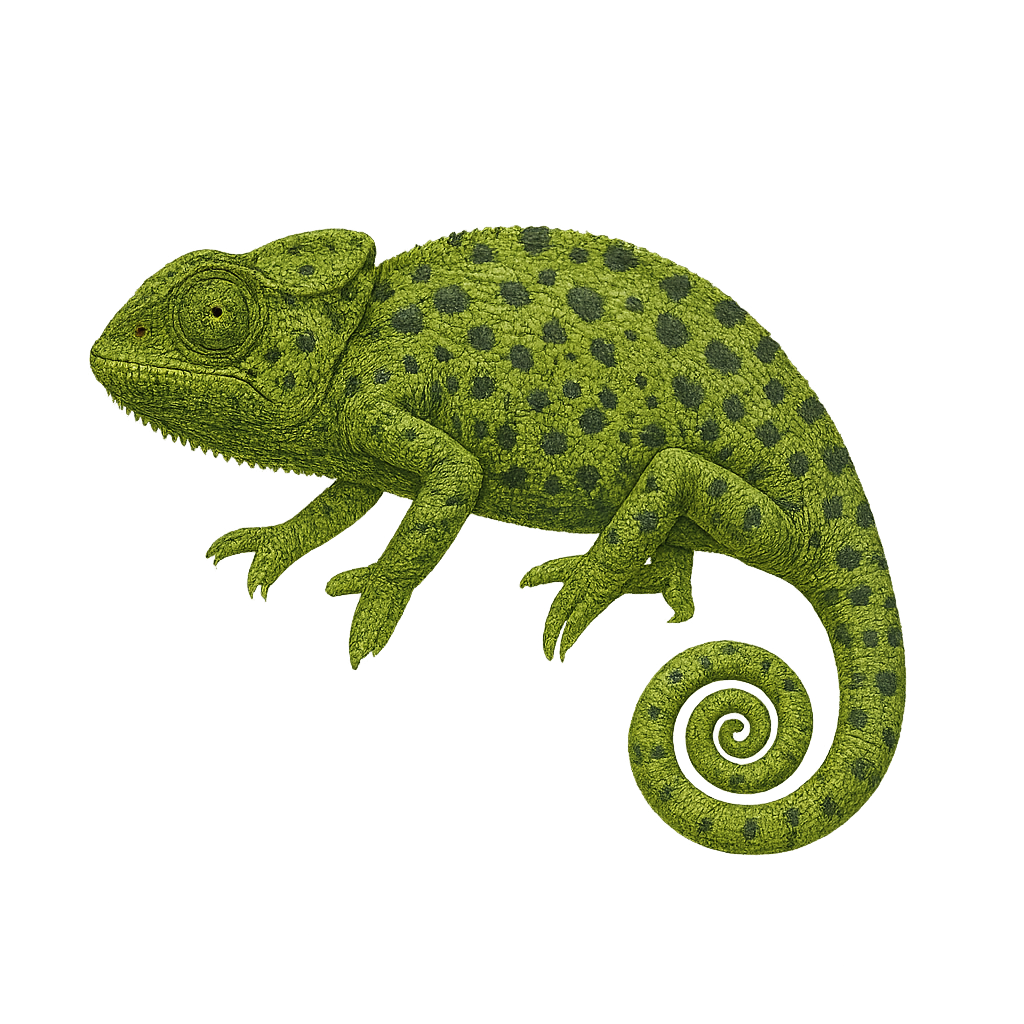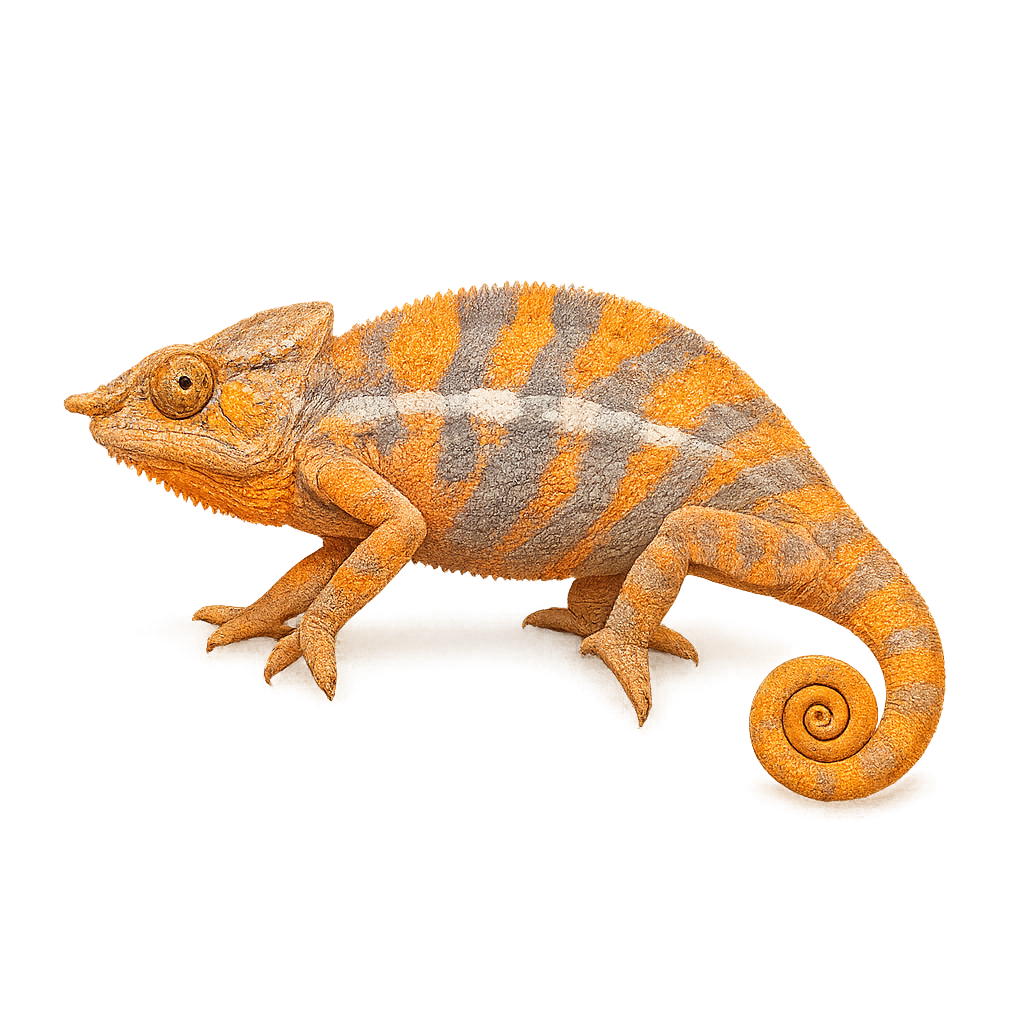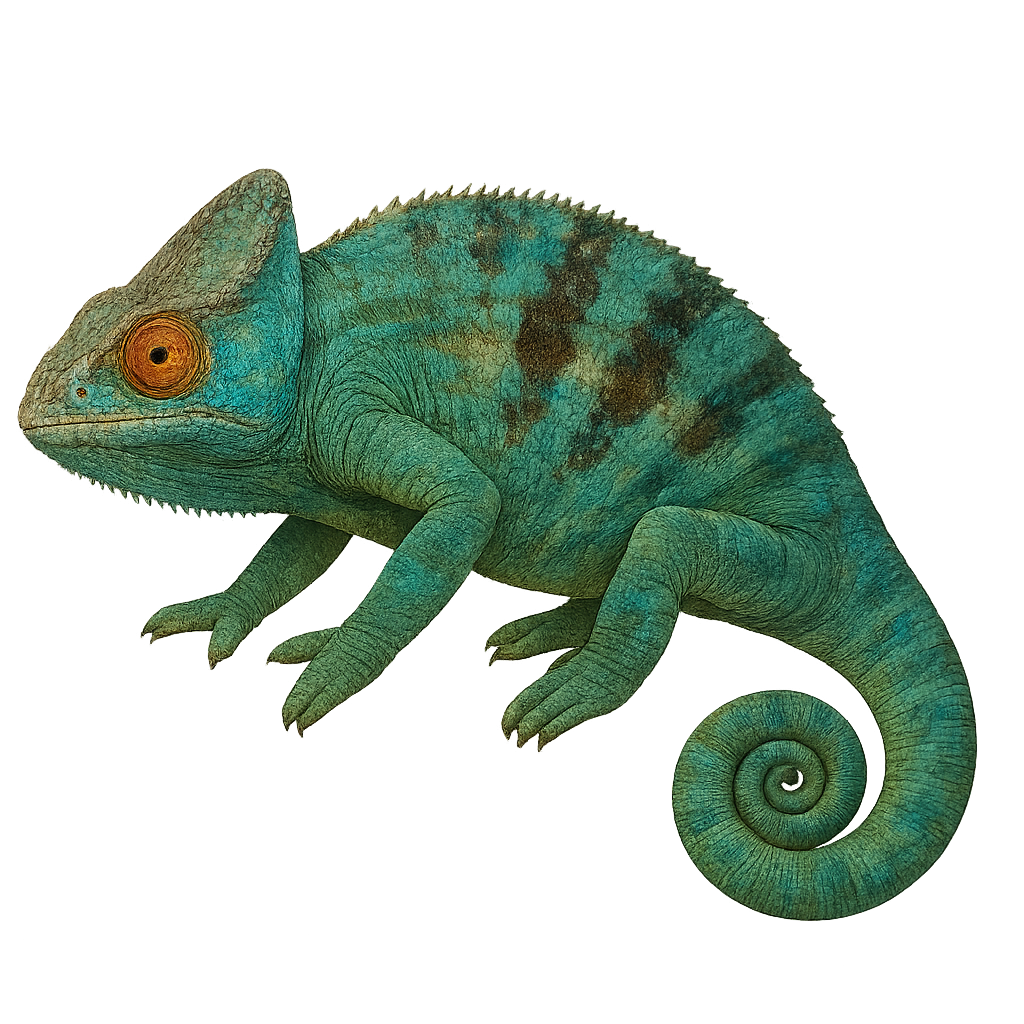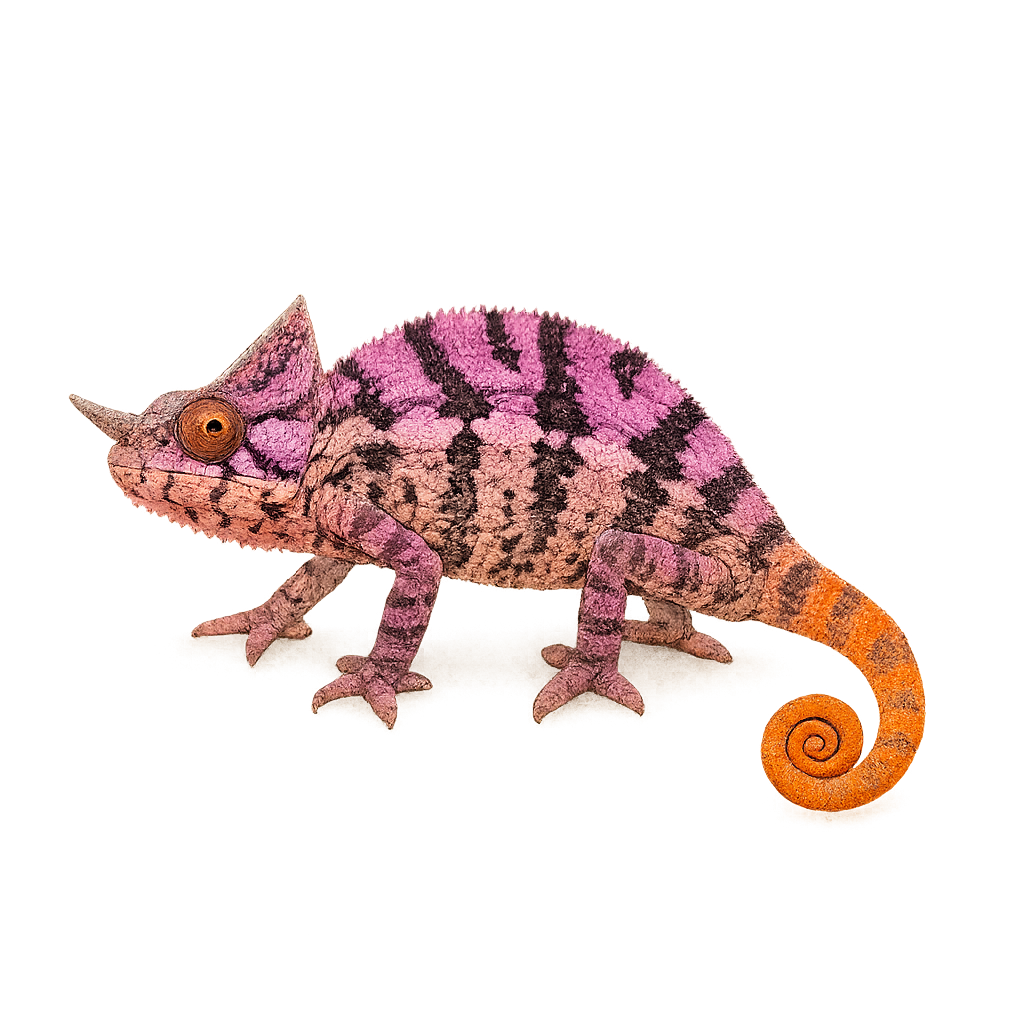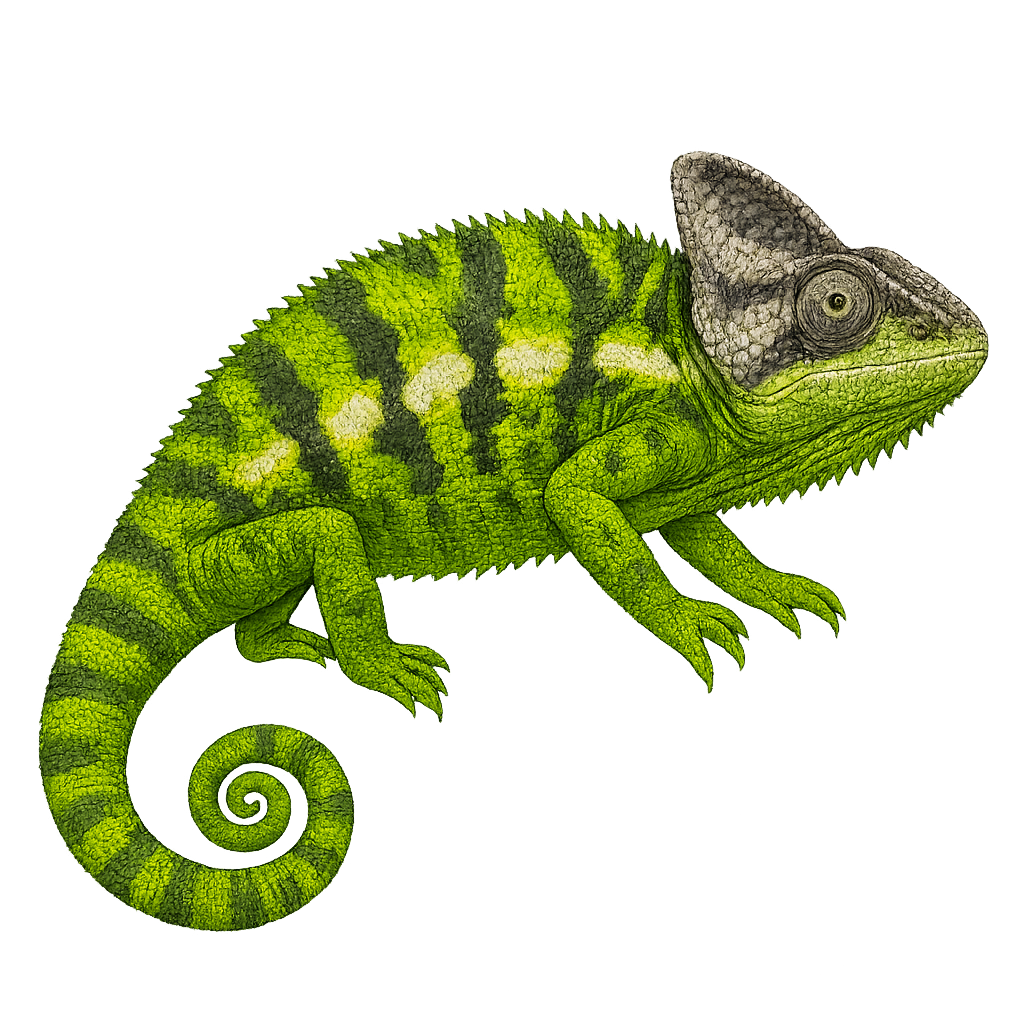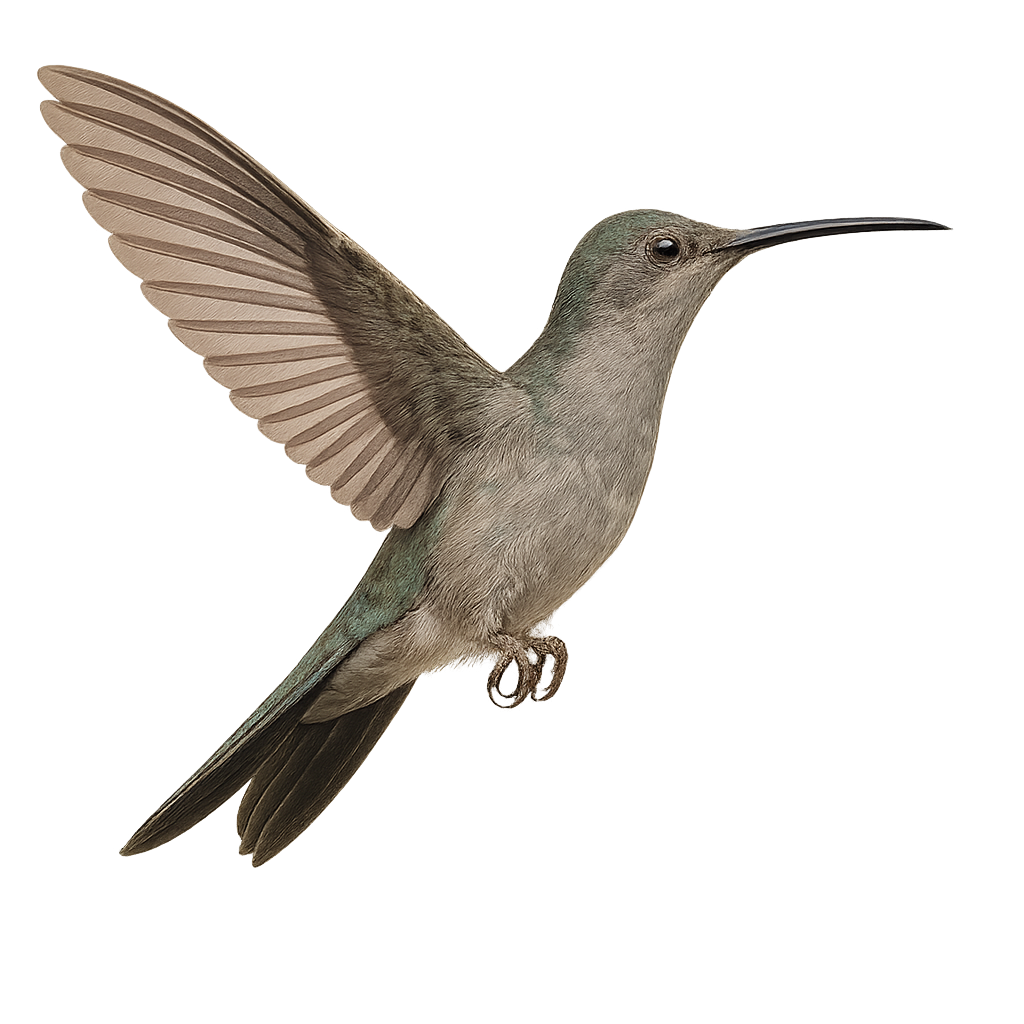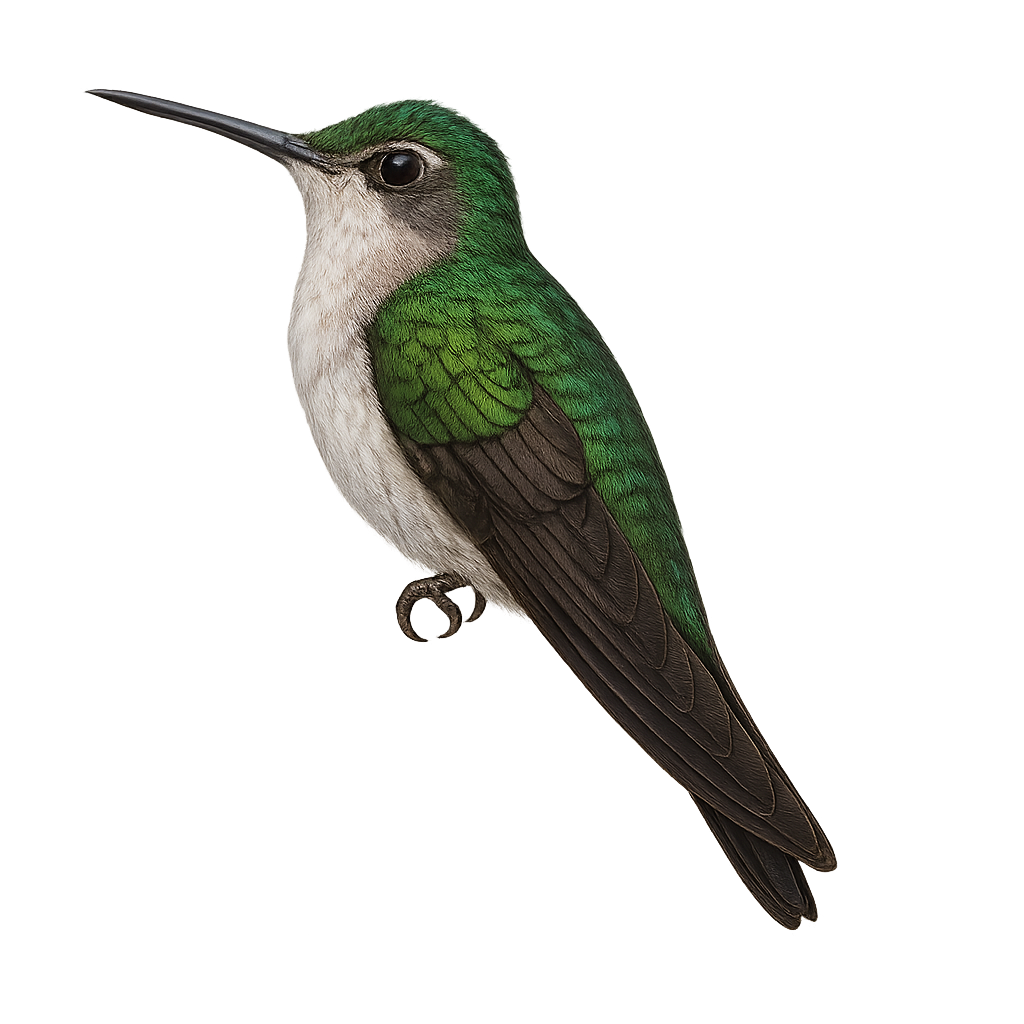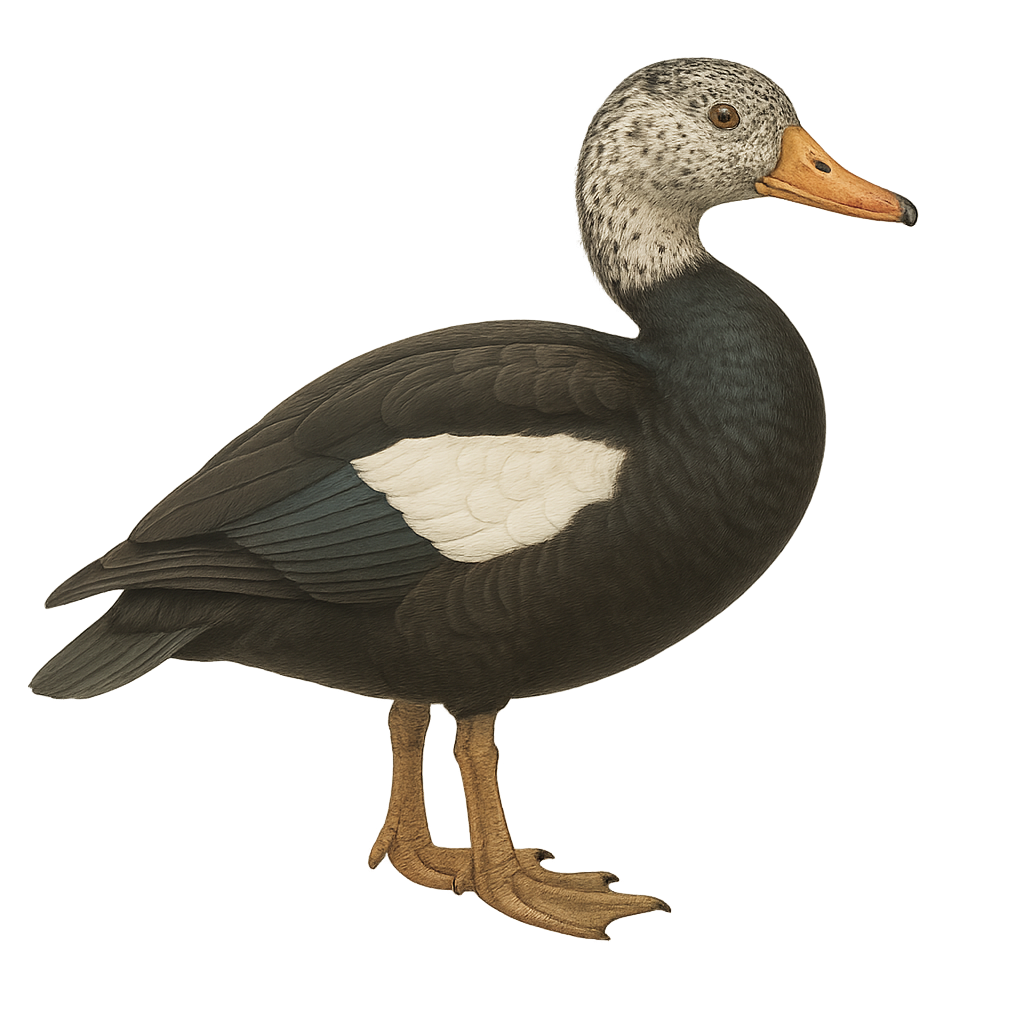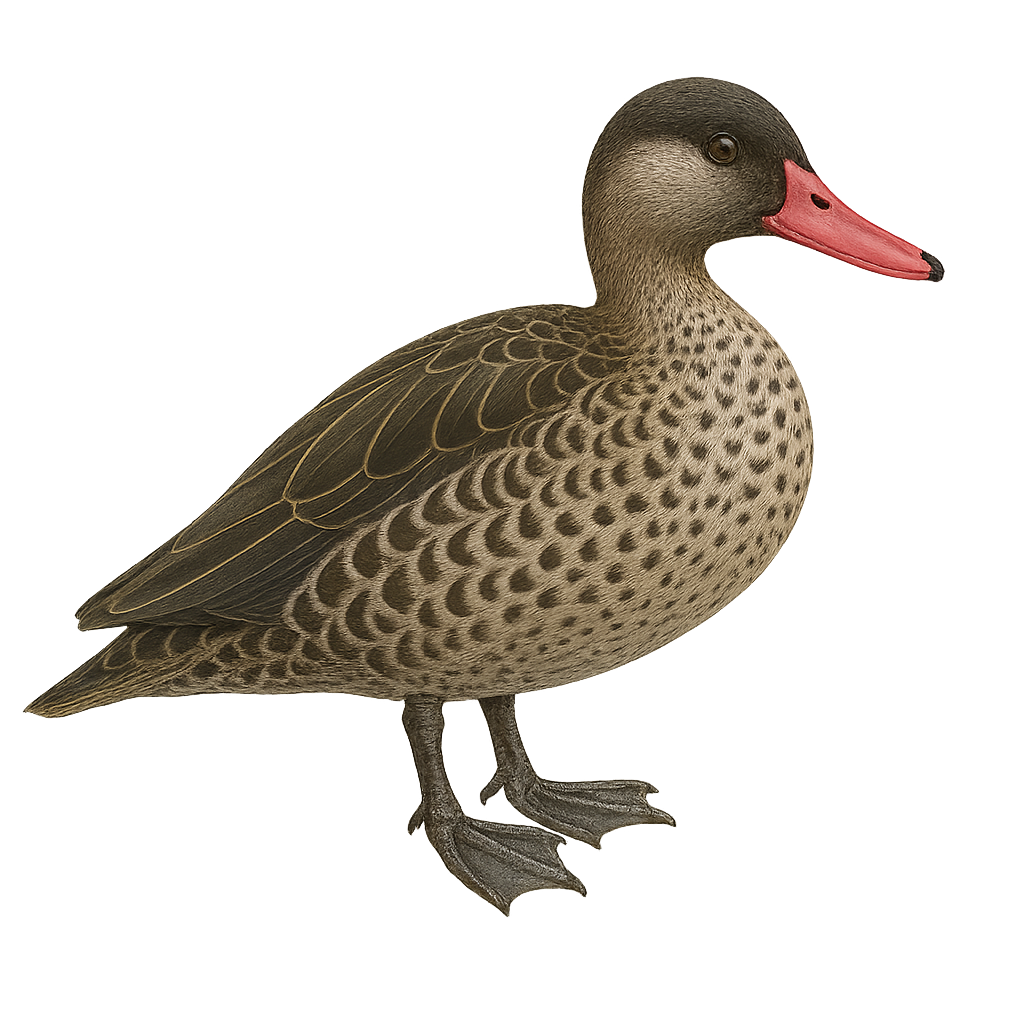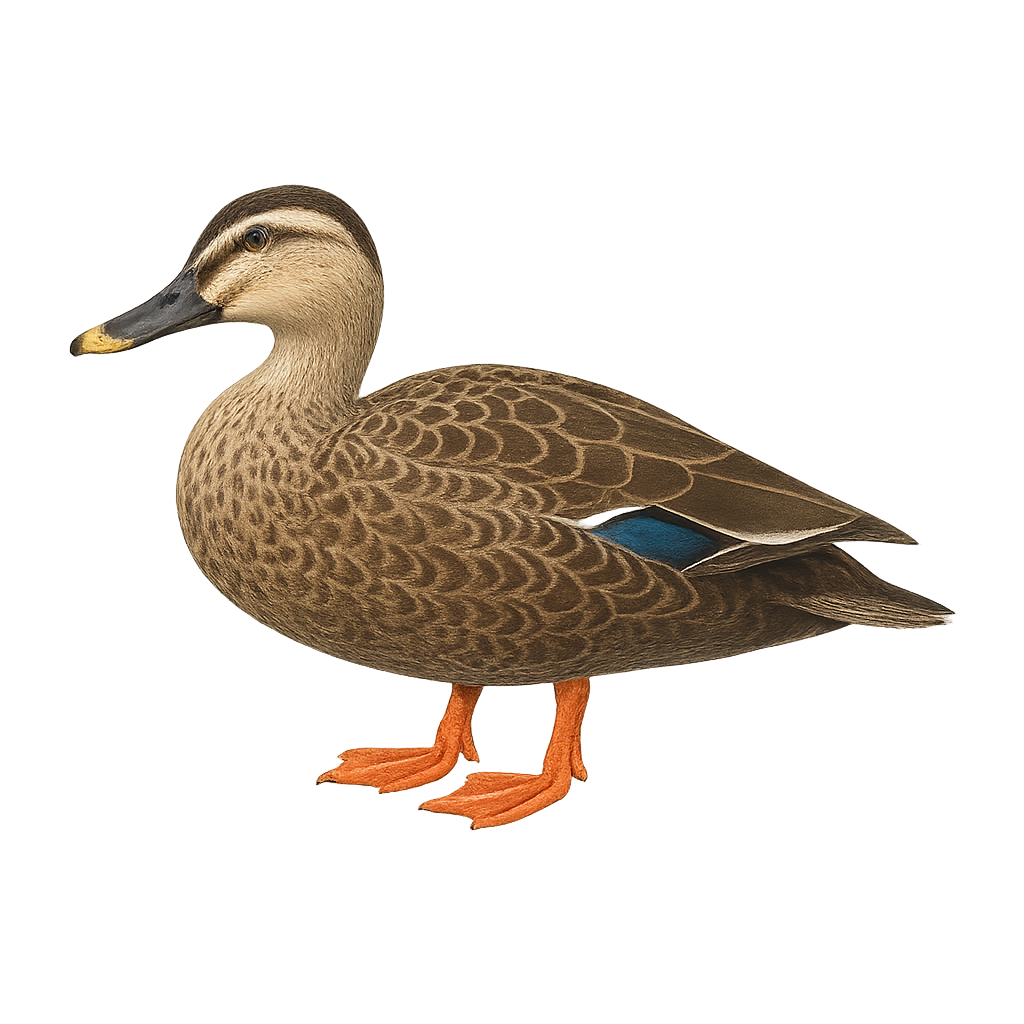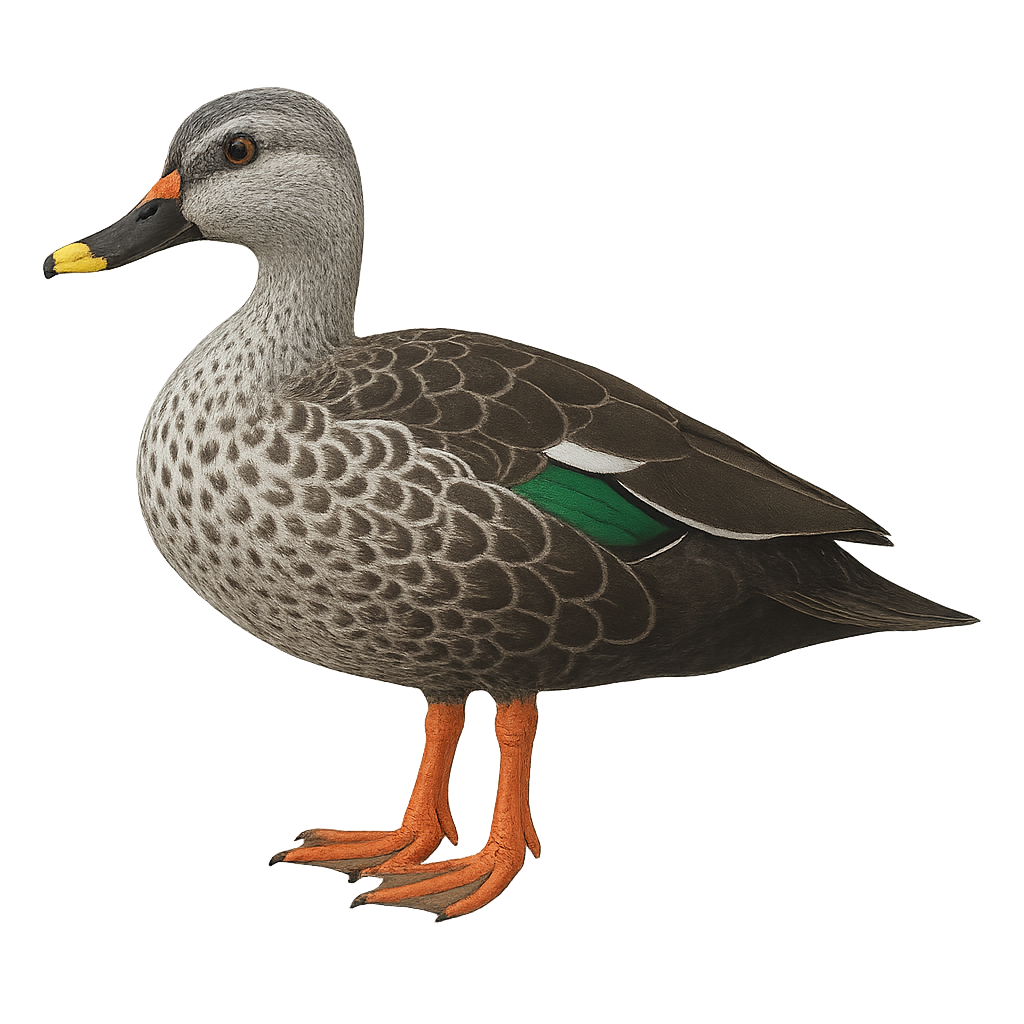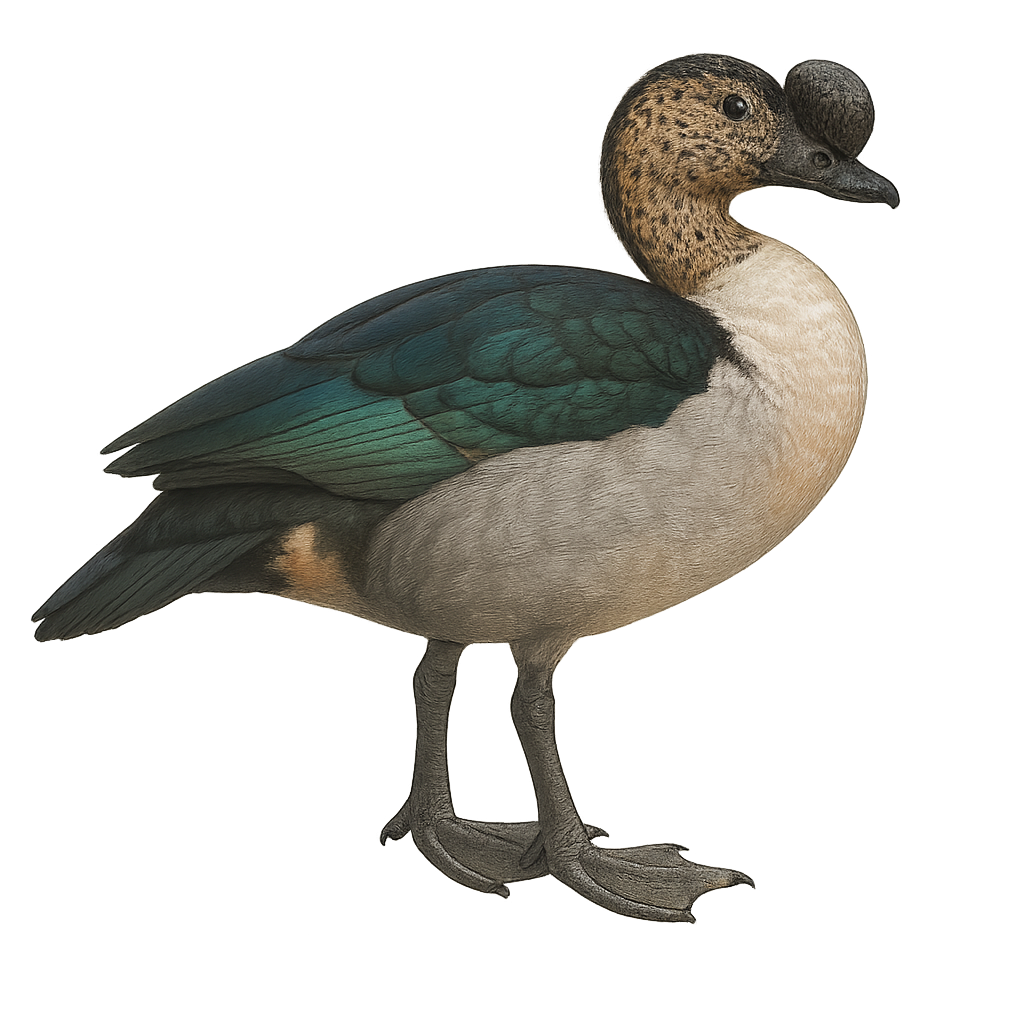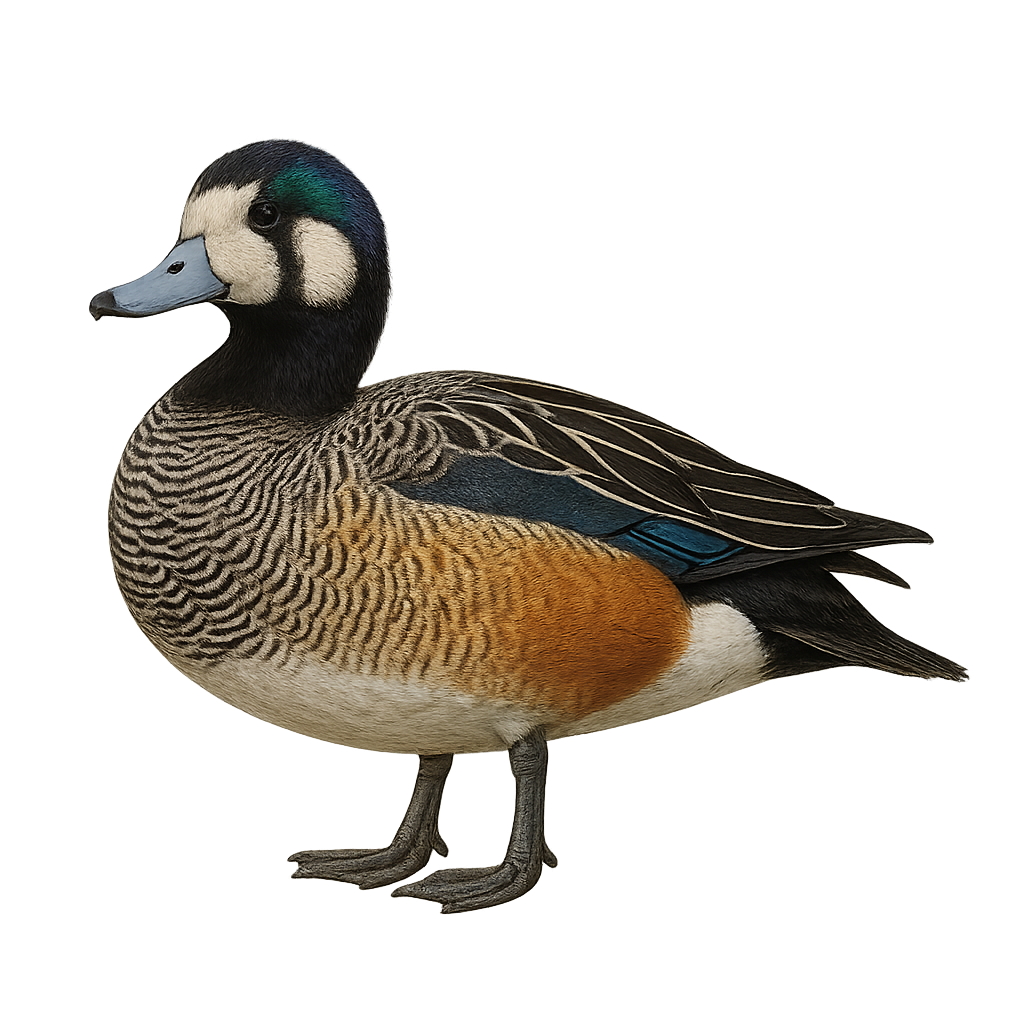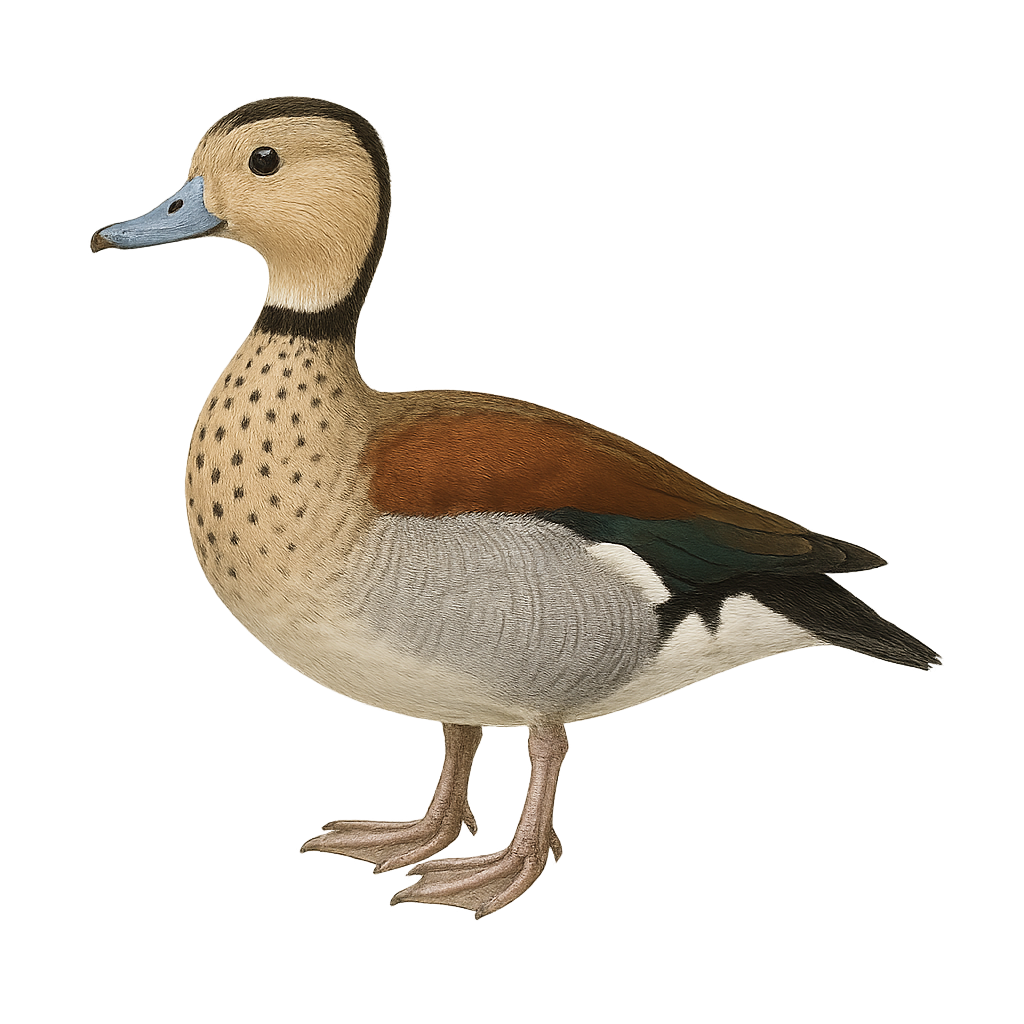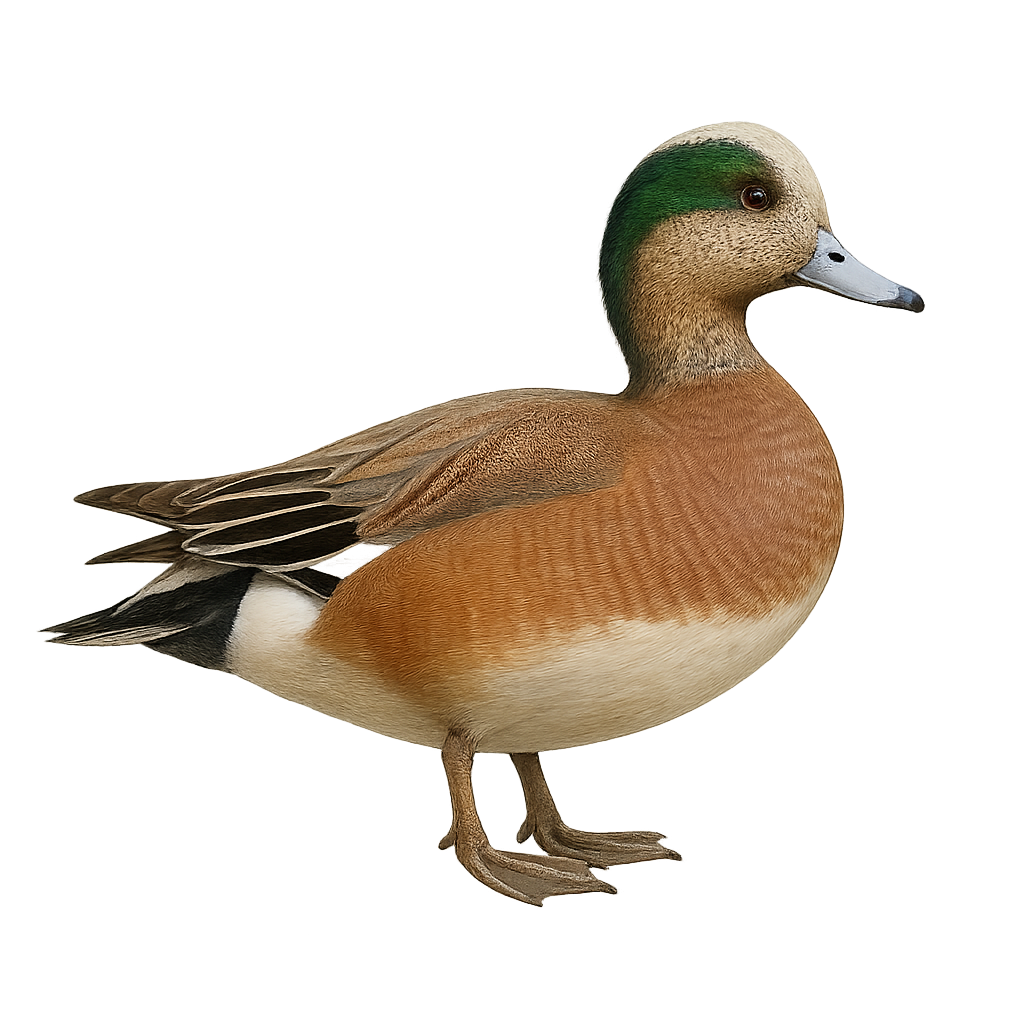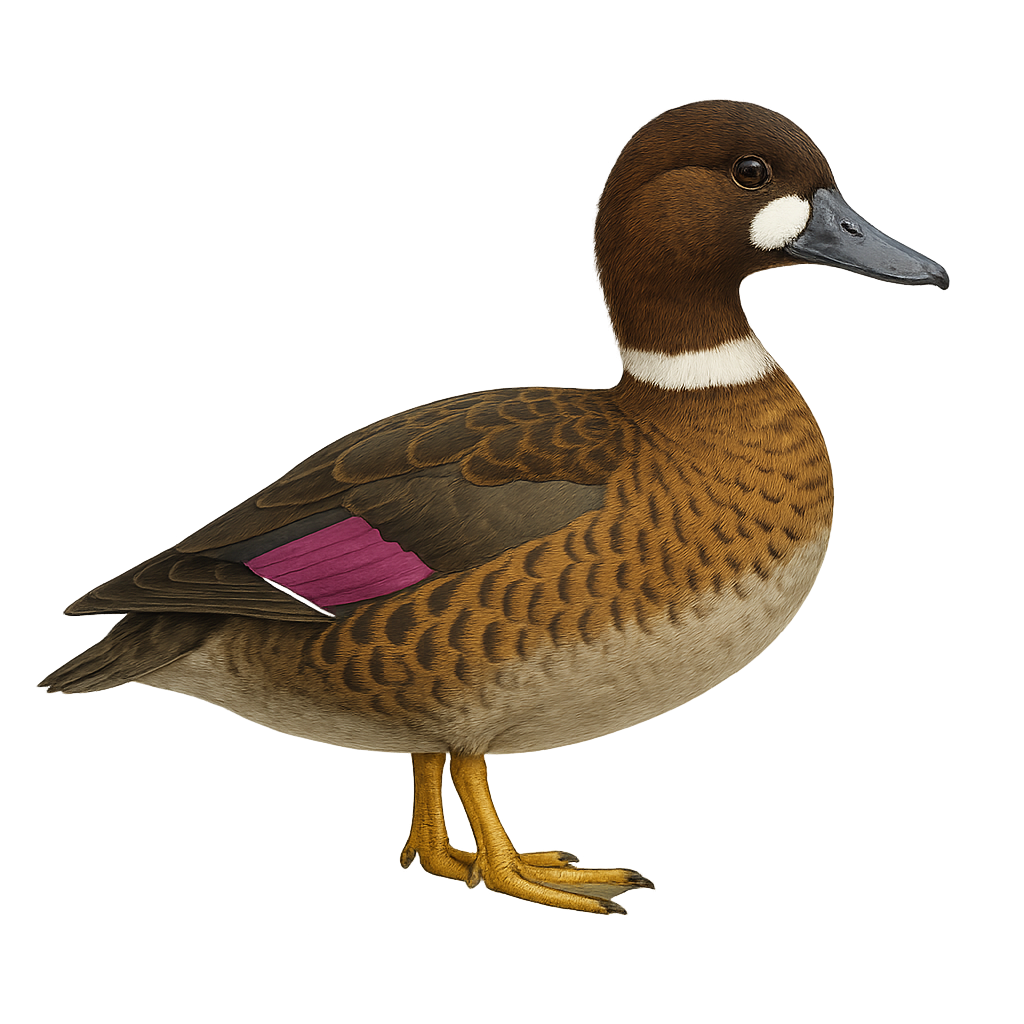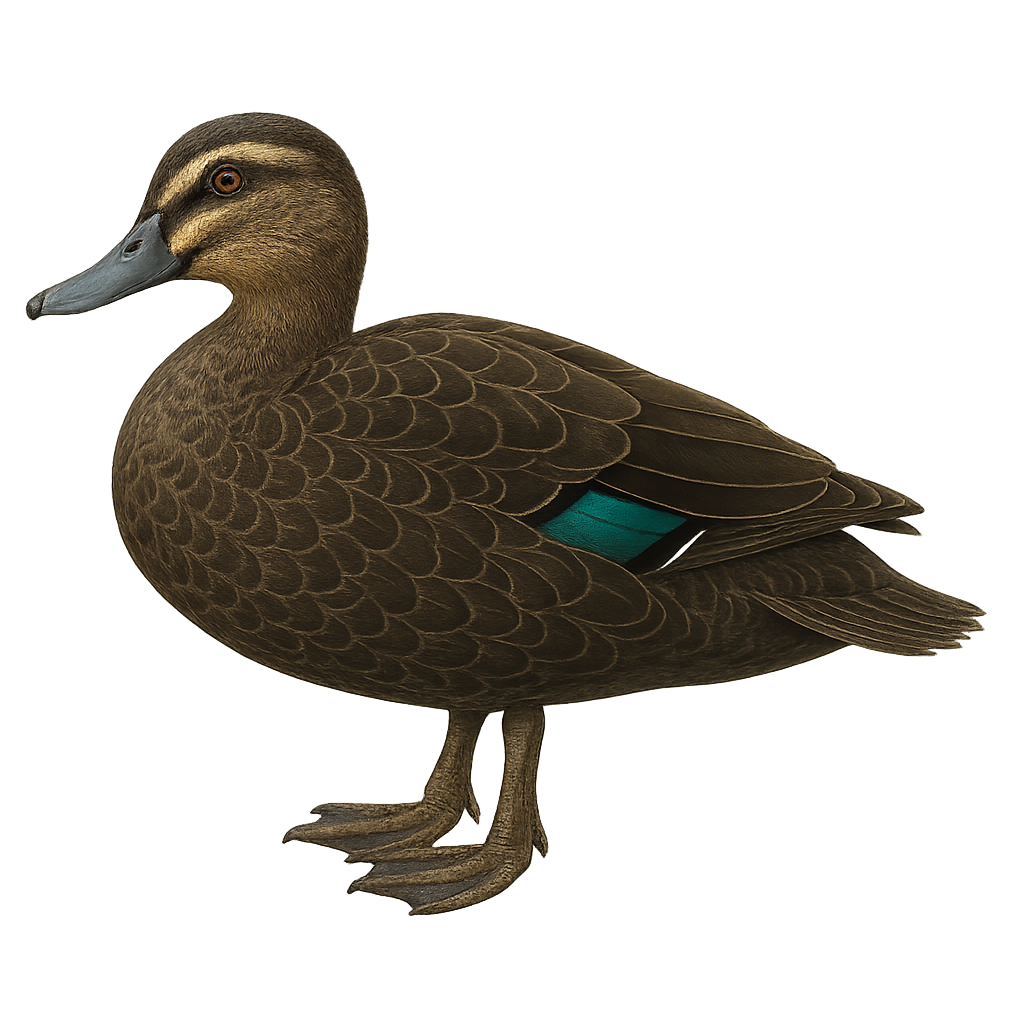The Hartert's Camaroptera is a small passerine bird belonging to the Cisticolidae family, predominantly found in sub-Saharan Africa. It is characterized by its olive-green back and pale grey underparts, with a short, often cocked tail. Known for its melodious and complex song, this bird is often heard before it is seen. It primarily inhabits dense undergrowth, secondary forests, and thickets. Its ability to blend into its surroundings makes it challenging to spot. The camaroptera is a territorial bird, often living in pairs or small family groups. It feeds mainly on insects and small invertebrates, which it captures by foraging through dense foliage.
The Calumma gastrotaenia, known as the Short-nosed Chameleon, is a chameleon species endemic to Madagascar. This reptile is notable for its modest size and vibrant coloration, often green with lighter lateral bands. It primarily inhabits the humid forests of the island's east, blending seamlessly into the dense foliage. This chameleon is a master of camouflage, using its ability to change color to protect itself from predators and communicate with peers. Its tongue, extremely long and fast, allows it to capture insects with remarkable precision. Though discreet, it plays a crucial role in the ecosystem by regulating insect populations.
The Furcifer lateralis, or carpet chameleon, is a species of chameleon endemic to Madagascar. This reptile is particularly admired for its vibrant colors and ability to change hues depending on its environment or mood. It typically measures between 17 and 25 cm in length, including its tail. Males often display more vivid colors than females, with distinct band patterns. This chameleon primarily inhabits humid forests and scrub areas, but can also be found in agricultural zones. It mainly feeds on insects, capturing them with its extendable tongue. Although relatively common, deforestation threatens its natural habitat.
The Calumma brevicorne, or short-horned chameleon, is a fascinating species of chameleon endemic to Madagascar. This reptile is distinguished by its short nasal horns and its ability to change color to blend into its environment. It primarily inhabits the island's humid forests, where it feeds on insects. This chameleon is diurnal and spends most of its time hunting and moving slowly among the branches. Its adult size generally ranges between 15 and 20 cm. Although it is relatively tolerant of human presence, it is essential to respect its natural habitat to ensure its survival. The Calumma brevicorne is currently classified as near-threatened due to deforestation and habitat loss.
The Calumma globifer, or ball chameleon, is a species of chameleon endemic to Madagascar. This reptile is particularly notable for its globular eyes, which provide a 360-degree field of vision, a significant advantage for spotting prey and predators. Its skin, a vibrant green, can change color to blend into its surroundings or express emotions. The ball chameleon prefers humid forests and wooded areas, where it primarily feeds on insects. It is generally solitary and territorial, except during the breeding season. Although its habitat is threatened by deforestation, it remains relatively common in some parts of the island.
The Calumma nasutum, or nose-horned chameleon, is a chameleon species endemic to Madagascar. This small reptile is easily recognizable by its prominent nasal appendage, giving it a unique appearance. It sports a green coloration that allows it to blend into its forest environment. This chameleon is primarily arboreal, inhabiting the island's humid forests. Its ability to change color is used for communication and thermoregulation. The Calumma nasutum is a diurnal animal, active mainly during the day. Its modest size and discreet behavior make it difficult to spot in the wild, making it a fascinating subject for wildlife observers.
The veiled chameleon is a medium-sized arboreal reptile (35–45 cm head–tail) with a bony cranial casque and zygodactylous feet. Native to the semi-arid regions of the Arabian Peninsula, it dwells in trees and shrubs feeding on insects and occasionally leaves. During the breeding season (March 1–June 30), the male displays bright colours and performs lateral casque-waving courtship rituals.
The common chameleon, Chamaeleo chamaeleon, is a fascinating reptile known for its ability to change color. Native to Mediterranean regions, it primarily inhabits forests, scrublands, and shrub areas. This chameleon is a master of camouflage, using its color-changing ability to blend into its surroundings and evade predators. It has an extremely long and fast tongue, which it uses to catch insects. Its vision is also remarkable, with eyes capable of moving independently, allowing it to monitor its environment in 360 degrees. Although primarily arboreal, it occasionally descends to the ground to move from tree to tree.
The Angel's Chameleon, Furcifer angeli, is a chameleon species endemic to Madagascar. This reptile displays vibrant colors, ranging from green to blue, with distinctive patterns that allow it to blend into its natural environment. It is primarily arboreal, living in the island's humid tropical forests. Its average size is about 20 to 25 cm, making it relatively small compared to other chameleon species. It mainly feeds on insects, which it captures with its extendable tongue. Habitat conservation is crucial, as deforestation threatens its survival. Although little studied, it is considered a vulnerable species.
The Labord's Chameleon, Furcifer labordi, is a chameleon species endemic to Madagascar. This reptile is particularly fascinating due to its extremely short life cycle, one of the shortest among vertebrates. Adults emerge after the rainy season, reproduce quickly, and then die, leaving their eggs to survive the dry season. This unique life cycle is an adaptation to Madagascar's climatic conditions. Males are often more colorful than females, displaying vibrant shades of green and blue. They primarily inhabit dry forests and shrub areas, skillfully camouflaging among leaves and branches.
The Parson's chameleon, or Calumma parsonii, is one of the largest chameleons in the world, native to Madagascar. It is renowned for its impressive size, sometimes reaching up to 70 cm in length. Its skin displays a range of colors from green to blue, occasionally with hints of yellow or orange, allowing it to blend into its forest environment. This chameleon is primarily arboreal, living in the island's humid forests. It is known for its extremely long tongue, which it uses to catch insects from a surprising distance. Although it is a solitary animal, it is relatively tolerant of human presence, making it a favored subject for naturalists.
The Panther Chameleon is an iconic species from Madagascar, famous for its vibrant colors and impressive patterns that vary depending on its mood and environment. This chameleon is primarily arboreal, living in the humid tropical forests of the island, where it hides among branches and foliage. It is also known for its ability to change color, an adaptation that helps it camouflage but is also used during fights between males or to attract a female. Although generally calm, it can become more active during the breeding season.
The Furcifer rhinoceratus, commonly known as the rhinoceros chameleon, is a chameleon species endemic to Madagascar. It is easily recognizable by its prominent nasal horn, which is more pronounced in males. This chameleon displays a green coloration with shades of blue and yellow, allowing it to blend into its forest environment. It primarily inhabits the island's dry and humid forests, where it feeds on insects. The rhinoceros chameleon is a diurnal animal, spending most of the day hunting and basking in the sun. Although it is relatively tolerant of human presence, it is important to respect its natural space to avoid disturbing it.
The Furcifer verrucosus, or warty chameleon, is a species of chameleon endemic to Madagascar. It is easily recognizable by its rough, warty skin, which gives it its name. This chameleon can reach a size of 23 to 25 cm, with a tail that represents about half of its total length. Its coloration varies from green to brown, with lighter or darker patterns depending on its mood or environment. It primarily inhabits the dry forests and shrublands of the island. Like most chameleons, it has independent eyes that allow it to scan its surroundings at 360 degrees. It mainly feeds on insects, which it captures with its extendable tongue.
The common vole, or Microtus arvalis, is a small rodent belonging to the Cricetidae family. It is widely distributed across Europe and Western Asia. This rodent measures about 9 to 12 cm in length, with a tail of 3 to 4 cm. Its fur is typically grayish-brown on the back and lighter on the belly. It primarily inhabits meadows, cultivated fields, and roadsides. The common vole is an herbivore, feeding on grasses, roots, and seeds. It plays a crucial role in the ecosystem as prey for many predators such as birds of prey and foxes. Its population can fluctuate significantly from year to year, thus influencing the abundance of its predators.
The Grey-breasted Sabrewing, scientifically known as Campylopterus largipennis, is a medium-sized hummingbird found mainly in the tropical rainforests of South America. This stunning bird is noted for its iridescent plumage, with shades of green and blue on its back and a grayish breast. Its tail is broad and slightly forked, giving it a distinctive silhouette in flight. Males and females are similar, although females may have slightly duller colors. This hummingbird is often seen feeding on nectar, using its long bill to reach tubular flowers. It plays a crucial role in the pollination of plants within its habitat.
The Curve-winged Sabrewing, scientifically known as Pampa curvipennis, is a medium-sized hummingbird found primarily in the tropical and subtropical forests of Mexico. It is characterized by its curved wings and relatively long tail. The plumage is generally green with metallic sheens, and it features a contrasting white throat. Both males and females look similar, although males are slightly larger. They primarily feed on nectar but also consume small insects to supplement their diet. Their fast and agile flight allows them to move easily between flowers.
The White-winged Duck, Asarcornis scutulata, is a rare and endangered species in the Anatidae family. It is notable for its dark plumage with striking white wings visible in flight. Primarily nocturnal, it inhabits dense forests and wetlands in Southeast Asia. Its population is declining due to habitat loss and hunting. This duck is often solitary or found in small groups. It feeds on aquatic plants, insects, and small fish. Conservation of its natural habitat is crucial for its survival, with protection efforts including the establishment of nature reserves and awareness programs.
The Yellow-billed Duck, Anas undulata, is a medium-sized duck species known for its bright yellow bill and greyish-brown plumage with wavy patterns. It is primarily found in sub-Saharan Africa, inhabiting lakes, rivers, and marshes. This duck is often seen in small groups but can form large flocks outside the breeding season. It feeds mainly on aquatic plants, seeds, and aquatic insects. Although generally discreet, it can be quite noisy, producing nasal calls. The Yellow-billed Duck is an adaptable species, capable of living in various aquatic habitats, allowing it to maintain stable populations despite environmental pressures.
The Red-billed Teal, Anas erythrorhyncha, is a medium-sized waterfowl known for its distinctive bright red bill. Its plumage is mostly brown with lighter patterns on the belly and grayish reflections on the wings. It inhabits the wetlands of sub-Saharan Africa, favoring lakes, marshes, and rivers. This duck is often seen in small groups but can form large gatherings outside the breeding season. It primarily feeds on aquatic plants, seeds, and insects. Although generally discreet, it can be approached closely in some areas where it is accustomed to human presence.
The Eastern Spot-billed Duck, Anas zonorhyncha, is a medium-sized waterfowl native to East Asia. It is easily recognized by its light brown plumage, iridescent wing patches, and distinctive yellow-tipped black bill. Preferring wetlands, lakes, and rivers, it feeds on aquatic plants, insects, and small crustaceans. This sociable duck often mingles with other duck species. Although generally tolerant of human presence, it can become wary if disturbed. Its adaptability to various habitats allows it to thrive in diverse environments, from coastal plains to mountainous regions.
The Indian Spot-billed Duck, Anas poecilorhyncha, is a medium-sized waterfowl known for its distinctive bill marked with yellow and black spots. Its plumage is primarily brown with lighter shades on the belly and darker patterns on the back. The wings feature a green iridescent speculum, visible in flight. This duck primarily inhabits wetlands, lakes, and rivers in South and Southeast Asia. It is often seen in small groups, feeding on aquatic plants, insects, and small invertebrates. Although generally not very shy, it can be suspicious in areas where it is hunted.
The Comb Duck, Sarkidiornis melanotos, is a medium-sized waterfowl easily identified by the prominent knob on its bill, particularly in males. It features a distinctive black and white plumage with metallic sheen on its wings. This duck primarily inhabits wetlands, lakes, and slow-flowing rivers in sub-Saharan Africa and South Asia. Social by nature, it is often seen in small groups. Its diet mainly consists of aquatic plants, seeds, and insects. Although generally tolerant of humans, it can become wary if disturbed. Conservation of its habitat is crucial for its survival, as it is vulnerable to environmental changes.
The Chiloe Wigeon, or Anas sibilatrix, is a medium-sized waterfowl known for its distinctive plumage. It features a white head with metallic green bands, a brown back, and a white belly. Its bill is blue-gray with a black tip. Native to South America, it primarily inhabits wetlands, lakes, and rivers. This duck is often seen in small groups and feeds mainly on aquatic plants, insects, and small crustaceans. Although generally not very shy, it can be cautious in the presence of threats. Its breeding season typically extends from spring to summer, and it builds its nest near water, often hidden in dense vegetation.
The Ringed Teal, Callonetta leucophrys, is a small, elegant duck native to South America, primarily found in the wetlands of Paraguay, Brazil, and Argentina. It is distinguished by its colorful plumage: males have a reddish-brown head with a distinctive white band around the neck, while females display a more subdued brown-gray plumage with delicate patterns. These ducks prefer wetlands, marshes, and lakes with dense vegetation, where they primarily feed on seeds, aquatic plants, and insects. Although generally discreet, they can be observed in small groups, often in pairs. Their behavior is rather suspicious, but they can become accustomed to human presence in protected areas.
The Australian Wood Duck, Chenonetta jubata, is a waterfowl native to Australia, known for its distinctive plumage and crest of feathers on its head. Males have a dark brown head and grey body, while females display a more subdued plumage with speckled patterns. These ducks prefer wetlands, rivers, and lakes but can also be found in grasslands and urban parks. They primarily feed on aquatic plants, seeds, and insects. Their social behavior is interesting, as they often form family groups. Although generally tolerant of humans, they can become wary if disturbed.
The American Wigeon, Mareca americana, is a dabbling duck species known for its striking plumage and feeding habits. The male features an iridescent green head with a distinctive white forehead stripe, while the female has a more subdued brown-gray plumage. These ducks are commonly found in wetlands, lakes, and marshes, feeding primarily on aquatic plants. They are migratory, spending summers in northern North America and wintering further south. Their flight is fast and direct, often seen in large flocks. Although generally wary, they can become accustomed to human presence in protected areas.
The Spectacled Duck, or Speculanas specularis, is a waterfowl species native to the southern regions of South America, primarily in Chile and Argentina. This duck is characterized by its dark brown plumage with metallic green sheen on the wings and a distinctive white ring around its eyes, giving it its name. It inhabits lakes, rivers, and marshes, often at high altitudes. Although relatively tolerant, it remains cautious around humans. Its population is stable, but it is sensitive to habitat disturbances. The Spectacled Duck is an excellent diver, feeding mainly on aquatic plants and invertebrates.
The Pacific Black Duck, or Anas superciliosa, is a dabbling duck species found mainly in Australia, New Zealand, and some Pacific islands. It is easily recognizable by its dark brown plumage with lighter patterns and a distinctive eyebrow stripe. This duck is often seen in wetlands, lakes, and rivers, where it primarily feeds on aquatic plants, insects, and small invertebrates. Although generally not very shy, it can become wary in areas where it is hunted. The Pacific Black Duck is an excellent swimmer and diver, using these skills to evade predators and forage for food.
The Patagonian Steamer Duck, Tachyeres patachonicus, is a flightless waterbird native to the southern coasts of South America, particularly Patagonia. It is easily identified by its greyish plumage and reduced wings, which it uses to paddle swiftly across the water. Often seen in small groups, this duck feeds on mollusks and crustaceans found in shallow waters. While generally discreet, it can become territorial during the breeding season. Males and females look alike, though males are slightly larger.


